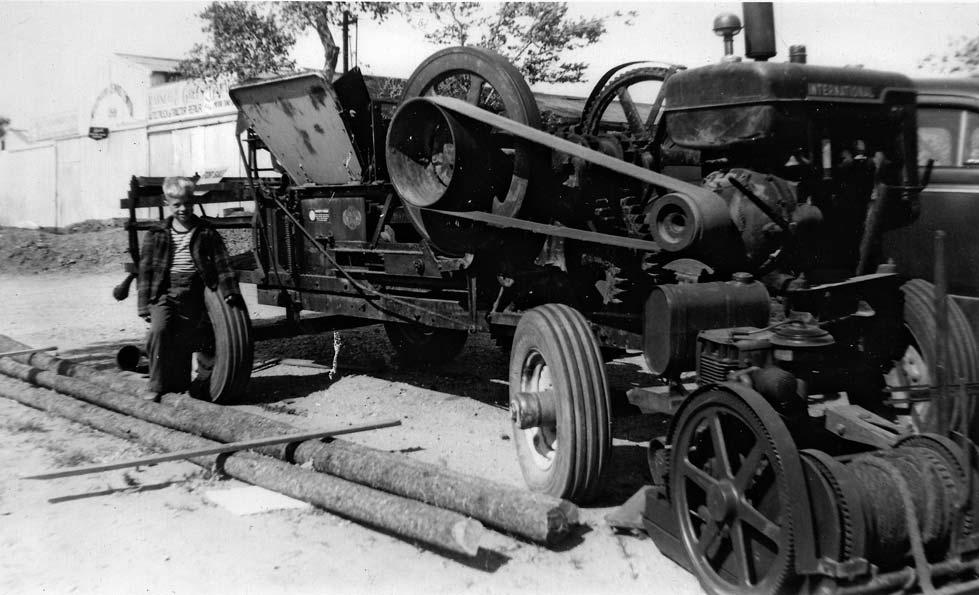
3 minute read
But For Real: A Conversation with Bruce Beasley on Art and Social Activism
from Bruce Beasley
Lawrence Weschler
Heading out to meet the sculptor Bruce Beasley, I’d been planning to talk to him about his conception of the sculptural vocation— what did he mean, precisely, when he described his geometric forms as “calling out” to him as they took shape in the vividly, sometimes almost epically, abstract gestures for which he is widely celebrated. And I was expecting to be doing so in what had once been—and not so long ago—one of the sketchiest, most blighted neighborhoods in the entire East Bay, which is to say West Oakland, wedged up against the teeming docks.
The neighborhood into which I instead alighted—the South Prescott subdistrict—comprised cozy, mostly century-old single-family units, and Beasley’s compound, in particular, situated at the end of a tree-shaded street, was positively Edenic. A well-appointed home designed by the artist, brimming with Indigenous art, and next door, the multi-use workspace that he had purchased for working and living at the beginning of his career, back in 1962. Girdling the two structures, a fragrant garden, in part given over to the spacious display of a career’s worth of Beasley works, and across the street, a huge gleaming studio, also designed by the artist, complete with a bridge crane and expanses of elegant glass for light, all to hold his still prodigious productivity.
When I commented on the exceptional and unexpected beauty of it all, Beasley pulled out a sheaf of photos, to prove to me that it hadn’t always been thus. The images, from when he first moved here in the early 1960s, were more like what I’d been expecting: dismal streets with potholes but no sidewalks, junkyards filled with wrecked cars, derelict houses, empty lots strewn with refuse, and underemployed neighbors.
As we now returned to his home’s airy two-story living room and took our seats, Beasley set about setting the table, as it were, for what he was hoping we’d be talking about: “There is a rather limited way that we define the political artist in our current climate,” he began. “There seems to be a presumption that including overtly political subject matter makes an artist ‘activist,’ and failing to do so suggests a lamentable failure of political responsibility, all of which comes with the corollary idea that merely by engaging political issues art has the capacity to actually effect social change in some way. And I question all of that. I’m not denying that political art communicates and has a profound place in history—just think of Goya!—but what drew me to social activism fifty years ago was a desire to be part of a project effecting concrete, on-theground results, and I’m not sure that most of what passes for political art today does that.”
He paused before continuing: “I suppose this question comes up for me at this late stage in my life in part because of the heightened character of the discourse around these issues in the art world generally these days, especially on campus, but also because I often wonder what that art world would make of an artist like me who resolutely does not use social issues as subject matter in his artistic production but who has actually practiced social activism in a committed way throughout his working life. Am I then a political artist, an activist artist, or just an engaged citizen who happens to be an artist? I don’t think art discourse and narrow definitions about political artists have investigated this question with any real depth . . . And I’d hoped that we might try to do that today.”
He continued as to how two braided strands—art and activism—had long dovetailed across the length of his own life, though he’d long avoided discussing his history of activism in the context of his art, because he wanted to keep the two distinct from one another. He did not want his community activism to then invite forced politicized narratives of his decidedly abstract work. But on the brink of a 60-year retrospective, he’d come to feel that now might be the time for a discussion of the full breadth of his life as both an artist and a citizen.
Perhaps, I suggested, he might begin with a quick overview of how he’d gotten into art, on the one hand, and activism, on the other, and then, for that matter, into West Oakland, of all places. Well, he recounted, he’d enjoyed a normal childhood in Southern California, but from early on he’d been drawn to the world of the visual and the spatial, in particular. In high school,
Untitled, 1960
















Encounter, 1995








